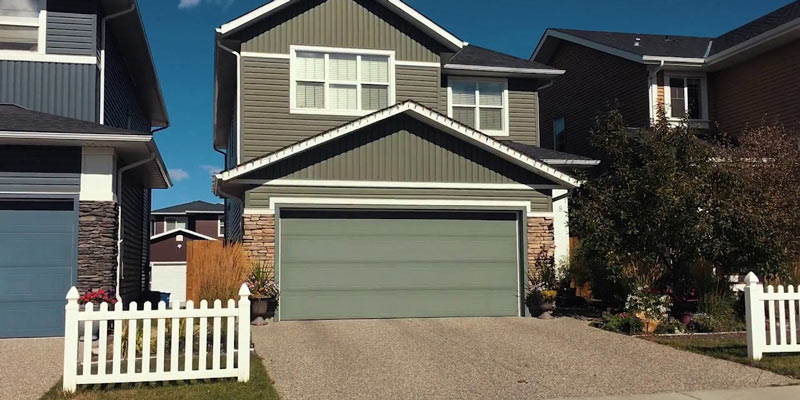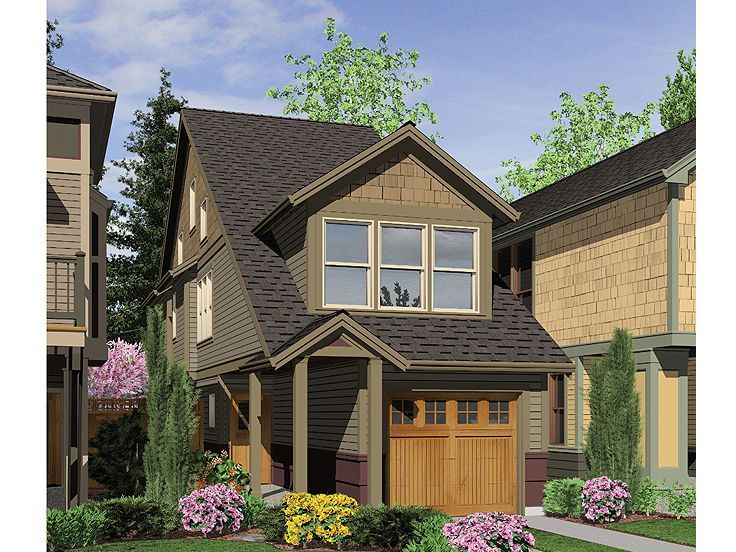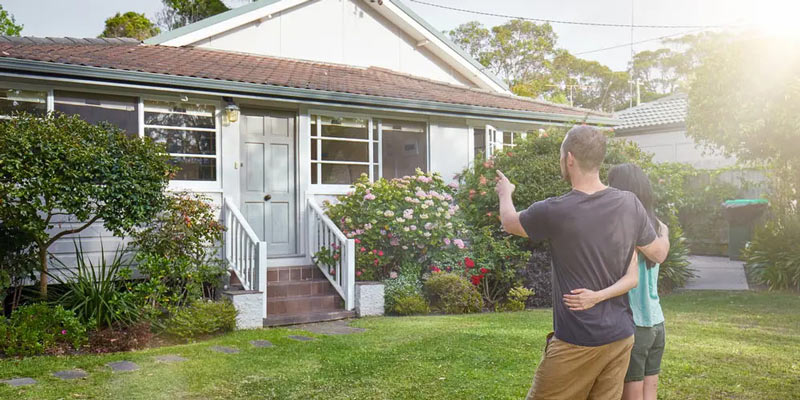
Have you been considering purchasing a zero-lot-line home? From the sound of it, it might seem like a complicated and intimidating investment. After all, what does "zero lot line" even mean? This type of home is quite common today and provides many advantages for homeowners.
In this blog post, we aim to provide an overview of the definition and benefits of buying a zero-lot-line house, giving readers peace of mind that they understand exactly what they're getting into before making such an important investment.
Defining a Zero-Lot-Line House

A zero-lot-line house is a single-family home joined to one or more neighbor's homes, with no actual lot line between them. This means that while your house would be built on its land, it would be connected to the other houses in your development along the shared walls.
In essence, zero-lot-line houses are simply attached housing units – similar to townhouses or condos – where each owner has full responsibility for their property but shares common walls with their neighbors.
What’s unique about these types of homes is that there are typically no yards (or only very small yards) associated with the properties. Most come with an HOA agreement that enforces certain rules about the look and upkeep of the development.
Benefits of Buying a Zero-Lot-Line House

As with any home purchase, there are benefits and drawbacks to buying a zero-lot-line house. Here are some of the advantages:
* Cost – Generally speaking, these homes cost less than detached single-family homes due to their smaller size and lack of outdoor space.
* Maintenance – The HOA agreement associated with zero lot line houses typically ensures that all residents maintain their property, meaning you won’t be responsible for your neighbor’s mess or damage.
* Taxes – Depending on your locality, you may be eligible for lower taxes if you purchase a zero-lot-line home.
* Location – These homes are becoming increasingly popular in densely populated areas, providing buyers with more housing options in desired locations.
By understanding the advantages of buying a zero-lot-line house, you can decide whether this type of home is right for you. Make sure to research your area’s zoning laws and HOA agreements before making any decisions so that you understand what types of restrictions may apply.
Drawbacks of Buying a Zero-Lot-Line House
Despite the advantages of buying a zero-lot-line house, there are also some drawbacks to consider before making such an important investment. Here are some of the potential negatives associated with this type of home:
* Privacy – Since your house is connected to your neighbor’s walls along the shared lot line, you will have less privacy than if you owned a detached single-family home.
* Noise – Because sound travels through walls, it might be difficult to escape noisy neighbors.
* Restrictions – The HOA agreement associated with your neighborhood may include certain restrictions limiting how much personalizing and customization you can do on your property.
* Resale Value – Generally, these homes have lower resale values than detached properties.
As with any home purchase, it’s important to research and understands all the potential drawbacks of buying a zero-lot-line house before making such an important investment. Make sure to review zoning laws in your area and HOA agreements to know exactly what restrictions may apply.
Talk to real estate professionals and homeowners who have lived in similar developments to get their input on the pros and cons of this type of housing.
Tips for decorating and furnishing your Zero-Lot-Line Home
Decorating and furnishing a zero-lot-line home can be a fun and exciting process, but it's important to remember that you may have fewer options than with other types of homes due to space constraints. Here are some tips for making the most of your living space:
* Utilize vertical storage – This is particularly useful in kitchens where you may not have much counter or cabinet space. Use wall shelves, racks, and hanging baskets to maximize your storage options while keeping clutter off the floor.
* Invest in multi-functional furniture – Look for pieces that can double as seating and storage, such as ottomans with built-in drawers or coffee tables with cubbies underneath. Investing in furniture that serves multiple purposes
will help you maximize your small space.
* Use natural light – Keep window treatments simple, and use mirrors to reflect increased natural light. This can help make the room appear larger and airier while reducing energy costs.
* Use bright colors – Utilizing bright and bold colors can help make a small room feel bigger. Choose a few accent walls or pieces of furniture to add pops of color, but keep the rest neutral for balance.
With these tips in mind, you'll be well on your way to making the most out of your zero-lot-line home.
Things to consider before moving into a Zero-Lot-Line House
When considering a zero-lot-line house, several factors should be considered before moving. Here are a few things to think about when deciding if this type of home is right for you:
* What Are Your Neighbors Like? – While living in a zero-lot-line home means you will have less privacy, it is important to still understand the kind of people you would be living next to. Research your neighbors ahead of time and find out their lifestyle to get a better feel for the types of restrictions or noise levels you may need to contend with.
* What Are the HOA Requirements? – Make sure to read your HOA agreement thoroughly and understand all the rules and regulations that may be associated with living in a zero-lot-line home. This will help you know what types of restrictions may be placed on how you can maintain or modify your property.
* What Is Your Budget? – Generally, these homes may have lower resale values than detached properties. Ensure you understand the costs of a zero-lot-line house and how it fits into your budget.
By taking the time to consider all of these factors, you’ll be in a better position to make an informed decision on whether or not this type of housing is right for you.
FAQS
How is a zero-lot-line house different from a standard house?
A zero-lot-line house has no front or back yards; the walls of the house are built up to the edge of the lot boundary. This means there is less space between neighboring houses, leading to increased privacy and more efficient land use.
How can I find a zero-lot-line house in my area?
Research online if you’re looking for a zero-lot-line house in your area. Look up local real estate listings and see if any developments or neighborhoods offer this type of housing. You can also reach out to local developers and builders to get their input on the pros and cons of this type of house.
You can ask friends and family members if they know of any developments or neighborhoods that offer this type of housing. Finally, don’t forget to check out your local newspapers for any potential listings.
What is zero lot in Calgary?
Zero lot in Calgary is a type of housing where the house's walls are built right up to the edge of the lot boundary. This means there is less space between neighboring houses, leading to increased privacy and more efficient land use.
Zero-lot homes can offer many advantages, such as reduced landscaping costs, decreased building costs, and a smaller carbon footprint. The neighborhood of West Springs is one example in Calgary that offers zero-lot homes.
Conclusion
Zero-lot-line house construction is on the rise due to its many advantages. While it isn’t right for everyone, those who find themselves able to purchase a zero-lot-line house should take the time to understand what they’re getting into. With due diligence and familiarity with local laws and regulations, potential homebuyers can make a decision that’s best for them and their families.



